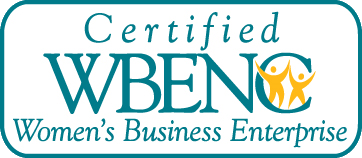How to Help An Employee That May Be Drinking Too Much
Guest blogger: Heather Lowe

Most of us are juggling multiple responsibilities including work, school, activities, and caring for households.
As a whole, we seem to be overwhelmed, taking on too many commitments and spreading ourselves too thin. This is in part to our “always on” world.
Alcohol is often used as a way to relax and unwind after a long day. Its common to use alcohol as a reward for enduring the stress of parenting, work and life.
For some (1 in 13 Americans) the glass of wine at the end of the day, can lead to unintended alcohol use disorder.
The cost of alcohol use disorder to employers is estimated to be between $33 billion and $68 billion per year and is due largely to absences, lost productivity, and injuries and accidents.
Working with, accommodating and supporting employees who struggle with substance abuse can be difficult due to the sensitive nature of the situation and the numerous employment laws that may be implicated.
An employee struggling with alcohol use disorder may have some of the following warning signs:
- Hangover symptoms including headaches, sensitivity to light, and irritability
- Having bloodshot eyes
- Sleeping while at work
- Decline in overall appearance including bad breath, wrinkled clothes, and disheveled hair
- Repeatedly using mints or mouthwash
- Avoiding supervisors
- Frequent tardiness
- Frequent use of sick leave
- Frequent absenteeism
- Difficulty concentrating
- Certain patterns of absenteeism (on Fridays, Mondays, or in the aftermath of payday)
- Unexplained disappearances while at work
- Withdrawal from contact with other co-workers or employees
- An unexplained decline in work quality
- Using multiple excuses to explain workplace deficiencies
What can you do to support an employee who has a concerning relationship with alcohol?
Examine the policy. It is important to have sufficient detail in your Drug and Alcohol policy to cover most situations. If your policies need adjusting for a more comprehensive guidance, then the company should move to make that happen. One important employment law to note in this case, is the ADA. The ADA requires reasonable accommodations for disabilities. When alcohol issues and/or mental health concerns rise to the level of a disability, employers have an obligation to meet with the employee and try to come up with a workplace accommodation. Seek consultation if you have questions about the laws or policies in place.
Don’t delay. If you have good reason to believe an employee is drinking before coming to work, act immediately. This situation could have a negative impact on morale, is a potential safety issue and does nothing to promote an engaging work environment. Act urgently. Gather your resources so you are prepared to address the issue with your employee. Offer a variety of options so your employee has a choice in how they want to move forward. Getting the employee professional help should be top of mind.
Practice Compassion: One reason only 10% of people with alcohol use disorder receive treatment is largely due to stigma. Research has shown that treatment for alcohol use disorder pays for itself, as it reduces healthcare costs and employee turnover, and boosts overall productivity. The employee is likely using alcohol as a way to cope and help themself manage stress. Alcohol dependency is an unintended outcome, that progressed over a period of time. This can happen to anyone, and judgment does nothing to help. The employee may be feeling overwhelmed, afraid, and defensive. Practicing compassion will go a long way toward building trust and helping the employee get the right support in place.
No Labels and Confidentiality: It’s not up to you to accuse or diagnose. Only report the facts, such as how often you may smell alcohol on the person, if you have seen the person drinking, and specific behaviors that have been alarming. Be careful with your language. For instance, “alcoholic” is not a medical term, and is also self diagnosed. It is not appropriate to use this language, unless you are talking about yourself. Offer a private and confidential discussion. Share with others, only on a need to know basis. The employee may feel embarrassed and ashamed about their behavior. Assure them that you value them and want to help. If they need to take time off, treat it as a personal health issue. It is not anyone’s business to gossip about.
Offer Support and Resources: Familiarize yourself with local resources available to support an employee struggling. Share reasonable accommodations that can be made for an employee willing to address the issue. Common accommodations for alcohol or substance abuse include a modified work schedule and a leave of absence for getting treatment. If you have an EAP program, you can share the information and help the employee set up an appointment with a trained counselor. If there is someone in your company that was able to overcome a similar struggle, and can act as a mentor, you can facilitate an introduction or meeting. Educate yourself on a variety of resources available. You can call and consult with a trained professional for assistance.
Promote a healthy work environment. People drink for a variety of reasons that could be lessened by an engaging, healthy work environment. Some companies use vendors that provide programs focused on healthy living. These could include assistance with alcohol reduction. Be mindful about offering alcohol at company events. Always offer equal alcohol free options to make work a safe place for people to choose not to drink. Never interrogate or question a person who is choosing to remain alcohol free. People choose not to drink for health, religious, recovery and a multitude of reasons. 30% of the population doesn’t drink and normalizing not drinking makes a safer work environment for everyone.
Check yourself: Be sure you are setting an example yourself of an ideal relationship to alcohol in the workplace. Remember, for many, drinking none is the right amount. Be sure you are rewarding, connecting, and celebrating with something more creative than booze.
About the Author:
Ditched the Drink offers a private, safe, solution for professionals questioning their relationship with alcohol. Founder, Heather Lowe, created an online digital class for individuals to take a break and evaluate their alcohol consumption. She also offers a Corporate Alcohol Free Challenge. Heather provides expert consultation, coaching, training and speaking for professionals and organizations brave enough to question their drinking habits. Heather has ditched the drink herself and is enjoying over 2 years alcohol free. Being “not that bad” kept her from being her best for far too long. She can be found on her website, ditchedthedrink.com and also on LinkedIn, FaceBook, Pinterest and Instagram as Ditched the Drink.







